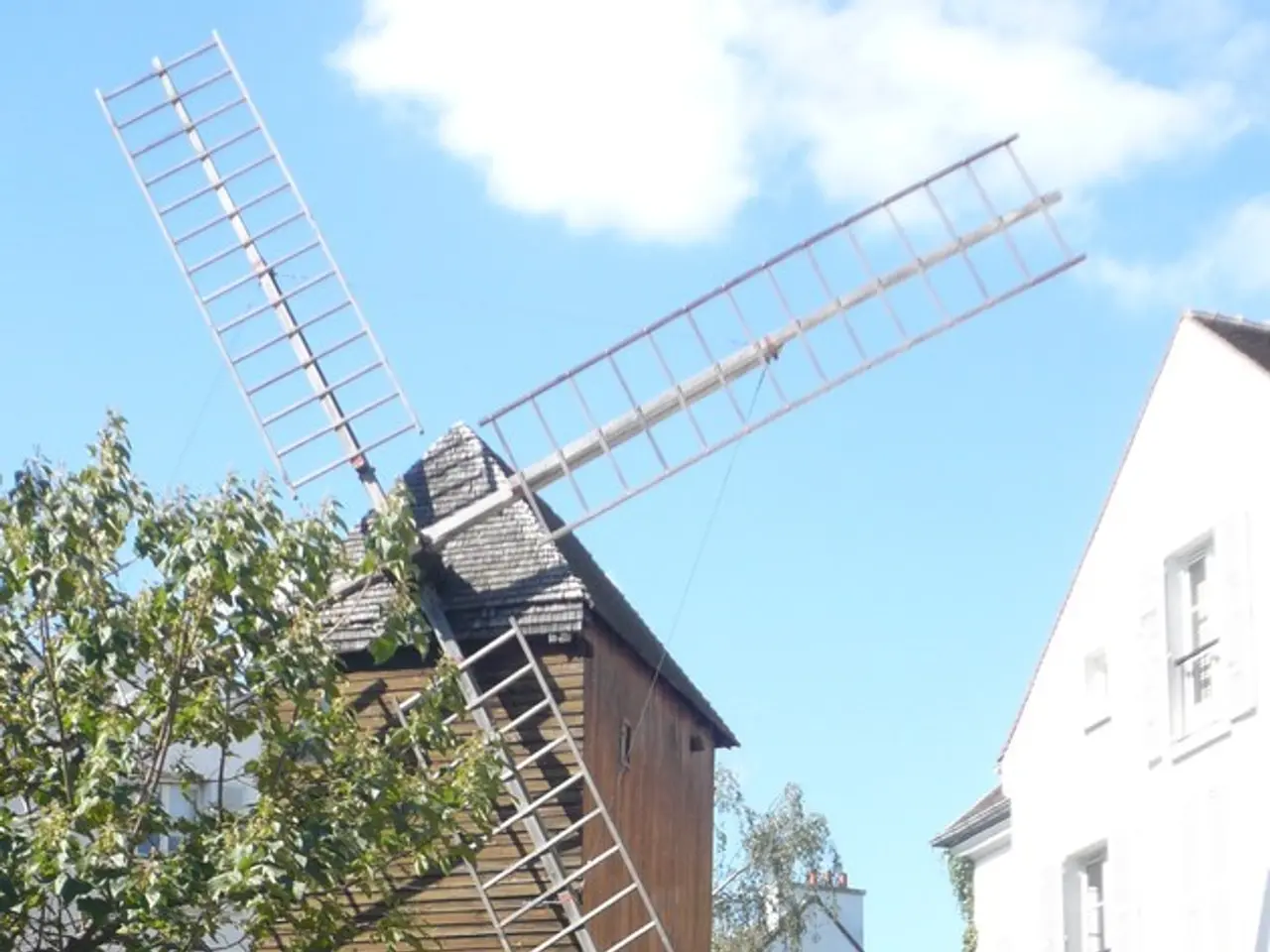Seven DIY Methods for Assessing Wind Velocity, Fostering Practical Competencies Using Common Household Materials
In the quest for accurate wind speed measurement, a DIY ping pong ball wind gauge offers an innovative and cost-effective solution for beginners and enthusiasts alike. This device, using basic physics principles, provides reliable wind data for gardening and outdoor planning purposes.
Building Your Own DIY Ping Pong Ball Wind Gauge
To create a DIY ping pong ball wind gauge, you'll need a few simple materials: a ping pong ball, thin string or lightweight rod, a rigid support stand or frame, a protractor or a method to measure angle displacement, and an optional lightweight tube or track to limit and measure movement precisely.
The construction process involves suspending the ping pong ball from the string so it hangs freely without touching anything. Position the stand outdoors or near the wind source, and when wind blows, the ball will be displaced from the vertical resting position. The more the ball is pushed sideways, the stronger the wind.
Measuring Wind Speed with Your DIY Gauge
To measure wind speed, you'll need to measure the angle between the vertical string and the direction of the displaced ball. This can be done with a protractor attached to the support or by marking calibrated arcs on a backing board.
Calibrating Your DIY Wind Gauge
Calibration is crucial to relate the ball's displacement angle to actual wind speed. On a day with known stable wind speeds, observe and record the corresponding displacement angles. Plot displacement angles vs. wind speeds to create a calibration curve, which will help you estimate wind speed from ball displacement in the future.
Additional Notes
The ping pong ball’s very low weight allows it to respond to light winds, making it an ideal choice for this project. Calibration must consider factors like the length of the suspension string and the ball’s drag area. For improved accuracy, you can add markings on the suspension track for precise angle measurement.
This design is a simple analog wind vane indicating relative wind strength rather than an absolute speed measurement device. If you want a more sophisticated measurement (e.g., digital output), you could combine the displacement mechanism with angle sensors or optical trackers, but the basic DIY model remains the same conceptually.
Natural Wind Indicators
While the DIY wind gauge offers a useful tool for wind speed measurement, it's essential to remember that natural indicators can provide valuable wind speed information. Observe tree movement, leaf behavior, smoke patterns, and dust displacement to gauge wind conditions.
For instance, light smoke that drifts straight up indicates calm conditions under 1 mph, while smoke that bends at a 45-degree angle suggests 8-12 mph winds. Leaves provide instant visual feedback, with gentle rustling indicating 3-6 mph breezes, steady movement suggesting 8-12 mph winds, and vigorous dancing signalling 15+ mph conditions.
Trees act as natural anemometers when you understand their movement patterns. Small branches and twigs begin swaying at 7-10 mph winds, while larger branches move noticeably at 15-20 mph. Dust and debris patterns on your property tell similar stories, with fine particles swirling in circular motions indicating light variable winds, while dust clouds moving in consistent directions show steady airflow above 10 mph.
With the right tools and understanding, you can harness the power of nature to measure wind speed, complementing your DIY ping pong ball wind gauge with valuable insights from the environment around you.
Incorporating the science of environmental-science, the construction of a DIY ping pong ball wind gauge utilizes the weather as a means to measure wind speed. This simple yet effective device uses basic physics principles similar to natural wind indicators such as tree movement and smoke patterns.
With the calibration of the DIY wind gauge, the options for improved accuracy expand to include weather data, allowing it to be used not only as an interesting hobby project but also for environmental-science research purposes.








